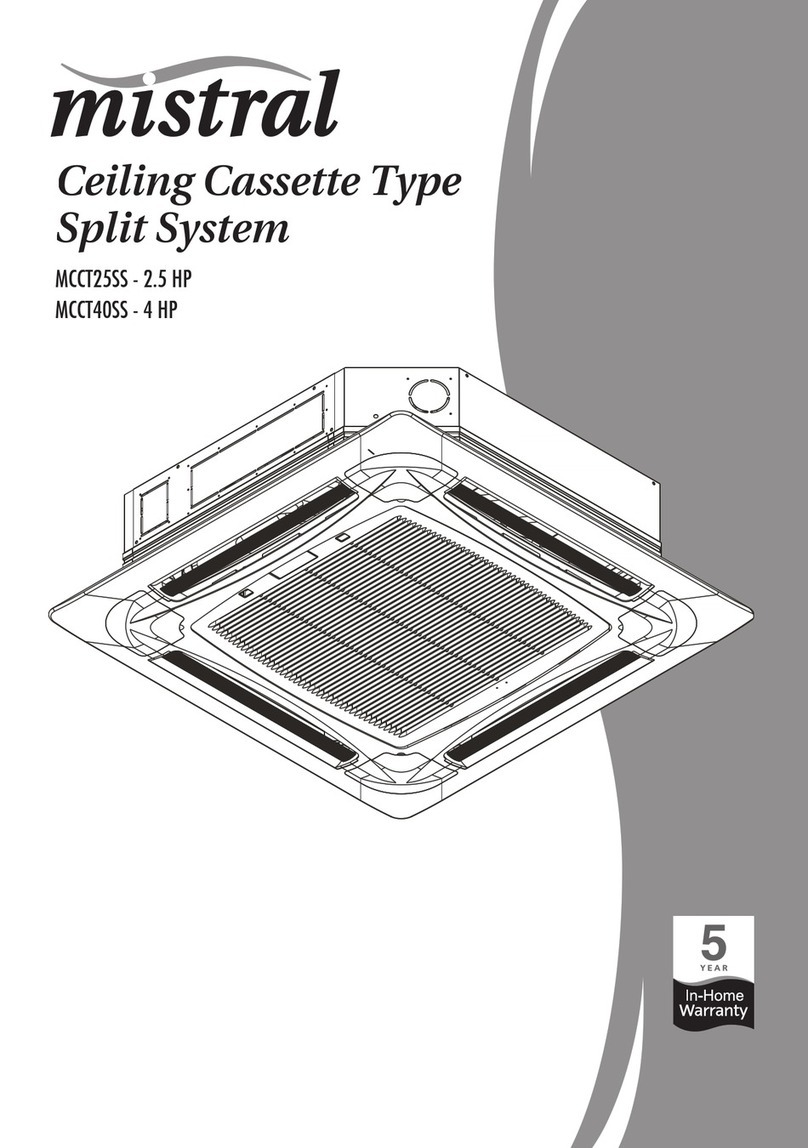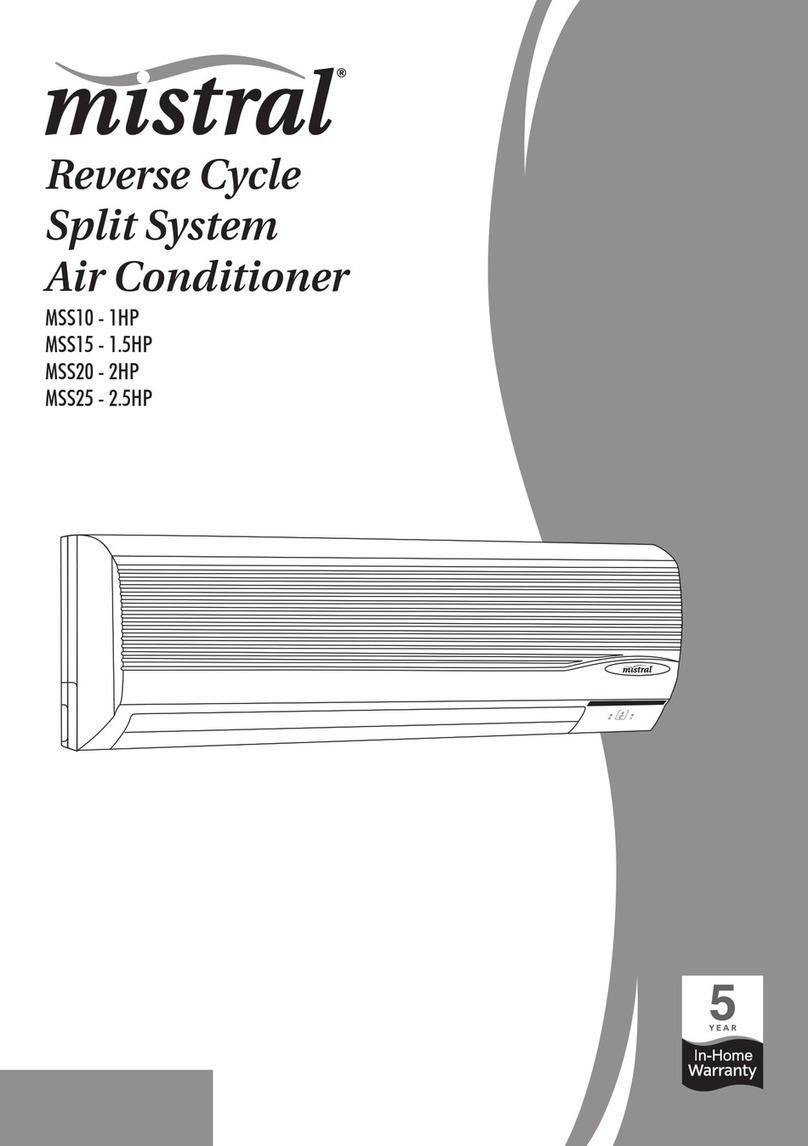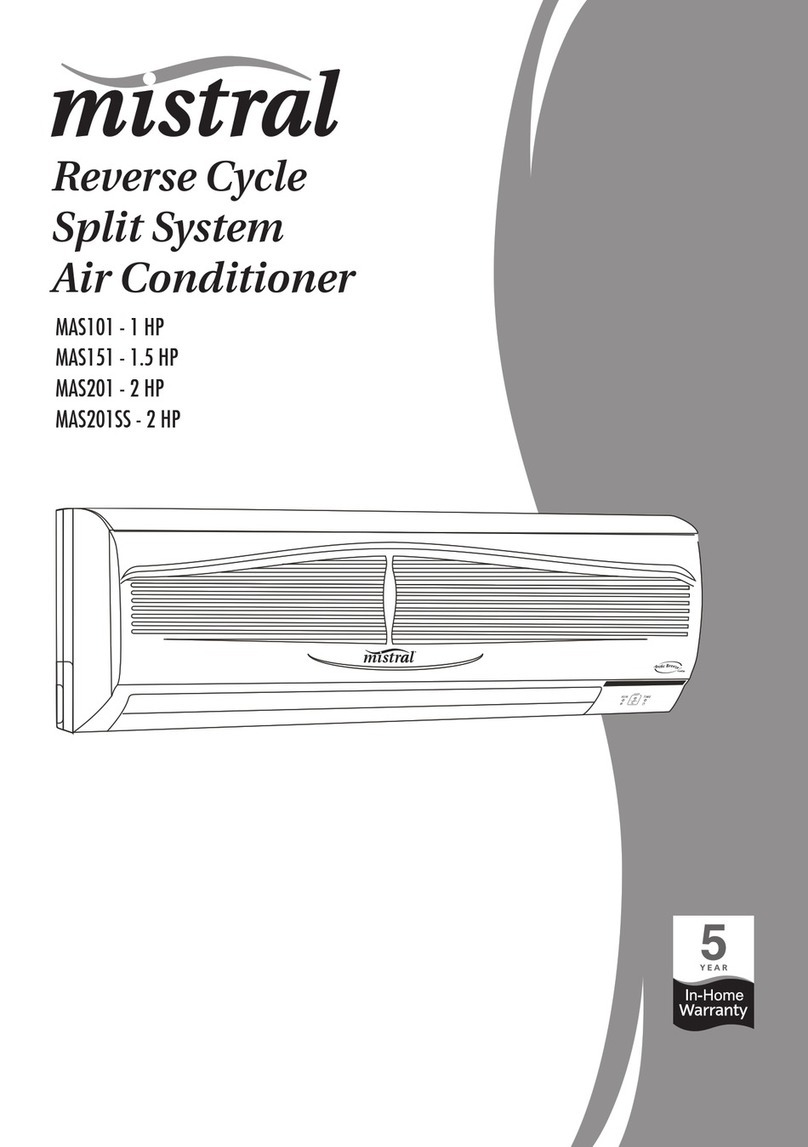
9
• Auto Stop:
While the air conditioner is running,
press the Timer button to activate the Auto
Stop program, the Timer indicator illuminates
and “01” shows on display. Press UP/DOWN
buttons repeatedly to set the time by 1 hour
increments up to 24 hours. The hour(s) will show
on display. When the set time has elapsed, the
air conditioner automatically stops and enter into
Standby mode.
• Auto Start:
While the air conditioner is in Standby
mode, press the Timer button to activate
the Auto Start program, the Timer indicator
illuminates and “01” shows on display. Press UP/
DOWN buttons repeatedly to set the time by 1
hour increments up to 24 hours. The hour(s) will
show on display. When the set time has elapsed,
the air conditioner automatically turns on.
• To deactivate the timer function:
Turning the unit ON/OFF at any time
or pressing the timer button repeatedly until the
timer indicator extinguished, the Auto Start/Stop
function will be cancelled.
SWING (air ow):
After machine turns on, press this key, the Air
Deector will swing continuously up and down;
by pressing this key again the movement will stop
and the Air Deector remain in that position.
DEHUMIDIFIER (Dehumi):
Press MODE key repeatedly to select
Dehumidifying. The “DRY” indicator will illuminate.
and “dh” shows on display.
Air is dehumidied as it passes through the unit,
without being in full cooling mode.
Note: If the unit will be used mainly as
a dehumidier, do not connect the
exhaust hose and let the warm air return
in the room. Continuous drainage is then
necessary and more efcient.
Under dehumidifying mode, sleeping function
cannot be activated, and fan speed is preset at
low and cannot be adjusted.
TANK FULL:
• This machine is equipped with auto-
water-evaporating system. Condensed-water
cycles to cool down the condenser, which will
not only improve cooling efciency, but also
save energy.
• If inner water tank is full, “Full” indicator
will ash and the machine enters into standby
mode, buzzer sounds, compressor stops and
all keys are invalid till machine recovers to be
normal. At this point, you need to empty the
water tank as per below steps.
• Disconnect appliance from the power
supply, detach the exhaust hose from back of
unit(If not in dehumidifying mode operation).
• Move the appliance to a suitable
drain location or outdoors where water can
safely be drained from the unit. You may also
place a pan under the drain port that will hold
1.5L of water to drain the water directly.
• Pull out drain plug from Drain Port and
drain water from the unit.
• Once the water collection tank is
drained, reinstall the drain plug, making sure it is
on securely. Move the unit back to its position,
reconnect exhaust hose ( not required if going to
operate appliance in dehumidifying mode), plug
back in to Domestic Power Outlet and switch
appliance ON , reselect your desired operation
mode.
• The appliance will now operate normally.
Use of a drain hose when using the
Dehumidifying mode
• If you wish to use the Dehumidifying
mode because the unit is running in high
humidity or for other reasons, a drain hose can
be connected for continuous draining.
• Pull out the rubber plug from
Continuous Drain Port carefully which is located
at middle back of the unit.
• Install the supplied drain hose to the
Continuous Drain Port on the back of the unit
and place the open end of the hose in a suitable
drain location or outdoors. Always protect
carpeting or oors from possible water spillage.
• The drain hose must point downwards
from drain point and route smoothly without
bends or kinks.

































